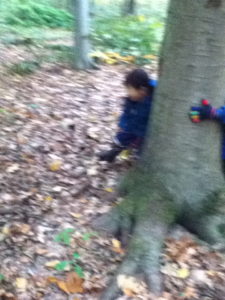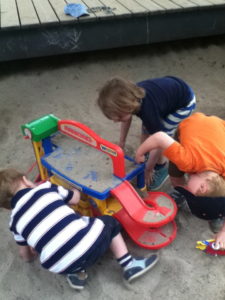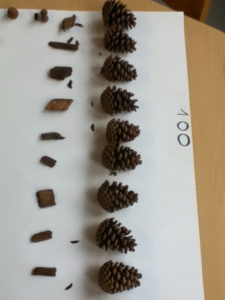by Carola Deinet-Knittel
Watching and reviewing the three videos
Roller Coaster Physics: STEM in Action
https://www.teachingchannel.org/videos/teaching-stem-strategies
When I watched this video I couldn’t stop waiting for its outcome.
The lesson the teacher Mrs. Donna Migdol offered to her students has been a great one in my opinion, as it shows how to get students into learning and deeper understanding of given tasks.
There have been several strategies the teacher set up for making this classroom project of science (Physics) an effective one.
Key concept of the lesson: “How the world works”
Problem solving: the children discussed how to make the roller coaster work –the teacher had the role of an observer, realizing by assessing individually the pupil’s knowledge, as she kept herself back and had some time to take a few notes related to the individual children.
Team Work: Through team work the whole class got inspired, as lots of discussions came up throughout the whole roller coaster project. The children stayed very focused, and also got ideas from one another. There is one thing that need to be mentioned, what I think is very important: as a student of a group you also need to keep yourself back, let others speak, accept others ideas to get the problem solved, honor others and find new ways to interact and communicate with one another. As you do this as a student you grow in your personality and focus on the outcome of the product- make it work as a ‘team’.
Documentation: Also, the teacher asks for documenting the students’ work. This is necessary, as through documentation problem solving might show up, and also it is a strategy you can assess students’ knowledge and learning outcome in detail.
Enjoy work: The task the children had to solve seemed to be inspiring, engaging and motivating them, while giving them also some positive time together with their peers. I realized the children’s smile and engagement. In class there seemed to be a positive atmosphere during work. When the roller coaster worked they all celebrated it, by raising their arms and cheering joyfully. ‘Together we made it!’ –this seems to be the message of this project! The teacher also talked about fun while working on the marble run.
Life- long learning: The children learn throughout this project for their life, as it enriches their self-confidence, patience, team support and thinking on a high level. The message is a clear one: go, give it a try, find solutions through discussions, and make choices.
Share responsibility: This is another great method to get the students into learning on a higher level. They learn to be responsible for their work and share this responsibility, such as the counter (treasurer) who has been responsible for the finances – just like in real life situations. The teacher has taken this strategy to deepen their understanding of learning, and also for ‘life-long learning’ –if you take over responsibility you need to give the best you can to make it work.
The behavior expectations, in my opinion, are ranked on a high level, as the children need to work closely together and definitely need to respect one another’s’ ideas, opinions, and methods. Agreements and rules need to be set up to make the roller coaster project be some successful work in the end!
Academically the teacher held up high performance expectations for her students. The physical level is a high one, and usually lots of input and teaching need to be given to make this kind of science lesson be an effective one. It seems to me that the teacher realized she could ask for more learning, – and throughout this the students achieved a higher level of learning.
I am convinced that this lesson about Kinetics and potential energy management and mechanics (in physics, Newton) gives a lot of learning depth for these students in class, as they learn through practice. Both, learning by doing and problem solving in a team, are strategies that deepen students’ understanding and learning in my opinion a lot.
Explainer: what makes Chinese maths lessons so good?
https://www.youtube.com/watch?v=h7LseF6Db5g
To me it seems as if the children of this 3rd grade classroom don’t seem to feel absolutely bored, -they just follow the lesson as they are expected to participate in it –no matter whether they like it or not. But there is no choice given in class to maybe work on a project, or together to problem solve a given math task. The article I read is about how math is taught at Chinese schools – such as memorize the multiplication rhyme. In China it is an old tradition to teach math in this kind of way (it was set up about 2200 years ago), and the Chinese teachers are still convinced that this kind of maths works the best for their pupils, and that routine practice is the most efficient learning method.
The outcome of documentation seems to show and underline this effect. There are highly talented students and adults that are highly valued in other areas of the world.
The main problem related to the teaching strategy I have observed while watching the video is the following:
In my ideal teaching world there exists some good relationship between students and teachers, communication is one of the keywords related to my teaching strategies, and to me it seems that the communication level in Chinese classrooms is ruled, highly structured and organized as if the children are under high pressure and kind of military drill. For sure, there are times in a classroom when the teacher needs to speak in front of the children, maybe write down on the black-whiteboard. But it is also a good practice to move from one to the next place, have a short transition time where the brain could relax for a moment and doesn’t need to focus this much.
I am not the one to value Chinese teaching practices, as we also need to learn to accept others’ cultures, also in teaching strategies. But couldn’t it be that this kind of teaching is also taken into governments’ culture of creating the Chinese population think and do “the same”?
When I was young, we also repeated the multiplication scale often and often- it didn’t do me any harm- I still know most of the outcomes and exercises.
But if talking about how to bring children to a higher level: I am personally convinced that students that are maths oriented, (or maybe not!) will reach a higher maths level if the teaching strategy is related to the real world. In China the teachers don’t show any effort to use maths in daily projects or activities, at my school the children use maths in a variety of ways, such as: go shopping at the market, compare the prizes, organize a shape hunt, go and find shapes on our playground (even with my youngest students!). I personally believe that this kind of learning also brings fun and motivation for the students, and they might reach a similar math level than children in China that are taught in the way of phasing. The teacher in class seemed to have some empathy for her students, but this culture is far away from my way of teaching understanding.
This video show that behavior expectations are also on a very high level, -no matter what a student likes to do- they need to follow the procedure of the lesson. It could well be that misbehavior might be treaten through some punishment, and the student might feel ashamed. So –better move on and don’t disturb- this is the message being set by the video, in my opinion.
Because of the norms and procedures that happen in classroom the learning will take place –no matter whether a student has understood the task, the teacher seems to move on. If there is a mistake (and mistakes are there to learn from them!), the teacher corrects it –that is all! I personally wouldn’t like to teach in this way – I for sure teach absolutely differently!
Whether there is high student performance- I think there is a low one, as the students only react on what the teacher wants them to learn! They repeat and answer all together –so there is shown no differentiation on individual learning.
Whole Brain Teaching Richwood High – The Basics
This way of teaching I have never seen before. It seems as if the whole class is very engaged in movements related to topics, tasks and procedures.
Teaching through movements such as rule number 1, number 4 or 7 gives the students input in a variety of ways. Related to geography, how the students find the exact location of a place; this they learn by demonstrating it with their arms. Also, they teach one another by using movements, such as “the Crazy Professor”, who explains through body language the task to his partner.
What -I think -is another great idea is to improve students’ brain work through reading: two students read one after the next, and repeat, what has lots of effect on their brain as it is in constant focus and concentration on what the opposite peer is doing. In this case the students learn by using their listening, speaking, visual, gross-motor and thinking skills.
All in all there seems to be a positive atmosphere in this classroom, the teacher engages the students to constant learning, and encourages them to work on movements related to what is asked for, include their peers and respectfully listen to one another.
Also, the children smile and are all very engaged in this teaching strategy.
It enhances their learning as there is lots of activity going on, – I am not sure whether it might be too much input, but related to the Chinese lesson it is much more positive and seems to show fun in class as well.
The academic expectations by the teacher are on a high level, as she engages them in understanding the given task. Also, the teacher is observing while walking around the classroom and having a look at what the students are doing.
The behavior of these students is on a high level, as they treat their partner respectful, need to listen to one another and imitate their body language.
Norms and procedures in class are set up clearly, the children know what to do and follow the teachers’ instructions.
All in all I would prefer to teach like shown in the first video, as this is the way of teaching I am quite used to, and I also think that the outcome of learning in this case is a high one.
Even with our youngest learners we try to find solutions in this kind of way, and creating marble runs our little ones like a lot. I have spent lots of time observing them through discussions whether this marble rolls up or down or into a hole or away,……
What about your opinion, dear colleagues?

 information related to our Units of Inquiry, we type in a question in front of a small group of students ( 4 to 6 students), and related to the topic ( e.g. how do seeds grow into a flower?) we try to search for the answer, mostly using photos, pictures of the internet to be shown for the students’ research. This kind of mobile device won’t overload the children’s attention, and again gives them a lot of language based learning which is absolutely necessary for getting access to some English.
information related to our Units of Inquiry, we type in a question in front of a small group of students ( 4 to 6 students), and related to the topic ( e.g. how do seeds grow into a flower?) we try to search for the answer, mostly using photos, pictures of the internet to be shown for the students’ research. This kind of mobile device won’t overload the children’s attention, and again gives them a lot of language based learning which is absolutely necessary for getting access to some English.






































